Potrebujeme váš súhlas na využitie jednotlivých dát, aby sa vám okrem iného mohli ukazovať informácie týkajúce sa vašich záujmov. Súhlas udelíte kliknutím na tlačidlo „OK“.
ASTM D7750-12
Standard Test Method for Cure Behavior of Thermosetting Resins by Dynamic Mechanical Procedures using an Encapsulated Specimen Rheometer
Automaticky preložený názov:
Štandardná skúšobná metóda pre Cure správanie termosetov živíc dynamických mechanických postupov za použitia Encapsulated preparátu Rheometer
NORMA vydaná dňa 15.11.2012
Informácie o norme:
Označenie normy: ASTM D7750-12
Poznámka: NEPLATNÁ
Dátum vydania normy: 15.11.2012
Kód tovaru: NS-39061
Počet strán: 8
Približná hmotnosť: 24 g (0.05 libier)
Krajina: Americká technická norma
Kategória: Technické normy ASTM
Kategórie - podobné normy:
Anotácia textu normy ASTM D7750-12 :
Keywords:
complex viscosity, composites, cure behavior, dynamic, flow, prepregs, rheological, storage shear modulus, thermosetting resins, viscosity, viscous shear modulus, ICS Number Code 83.080.10 (Thermosetting materials)
Doplňujúce informácie
| Significance and Use | ||||||||||||||||
|
5.1 This method provides a simple means of characterizing the cure behavior of a thermosetting resin specimen that is a representation of a composite part. The diameter of the specimen is approximately 38 mm and the thickness ranges from 2.6 to 3.2 mm. This corresponds to a sample volume of approximately 3 to 4 cm3. The data may be used for quality control, research and development, and verifying the cure within processing equipment including autoclaves. 5.2 Dynamic mechanical testing provides a sensitive method for determining cure characteristics by measuring the elastic and loss moduli as a function of temperature or time, or both. Plots of cure behavior and tan delta of a material provide graphical representation indicative of cure behavior under a specified time-temperature profile. The presence of fibers within the resin may change the dynamic properties measured within a material. However, it is still possible to compare different resins with the same fiber structure and obtain the relative difference due to the resin cure properties. 5.3 This method can be used to assess the following: 5.3.1 Cure behavior, as well as changes as a function of temperature or time, or both, 5.3.2 Processing behavior, as well as changes as a function of temperature or time, or both, 5.3.3 The effects of processing treatments, 5.3.4 Relative resin behavioral properties, including cure behavior, damping and impact resistance, 5.3.5 The effects of reinforcement on cure. 5.3.6 The effects of materials used to bond the resin and reinforcement, 5.3.7 The effect of formulation additives that might affect processability or performance. 5.4 This provides a method to assess the cure properties of a thermosetting resin containing woven fiber or other reinforcing materials. 5.5 This method is valid for a wide range of oscillation frequencies typically from 0.002 to 50 Hz. 1.1 This method covers the use of
dynamic mechanical instrumentation for determination and reporting
of the thermal advancement of cure behavior of thermosetting resin
on an inert filler or fiber in a laboratory. It may also be used
for determining the cure properties of filled resins and resins
without reinforcements. These encapsulated specimens are deformed
in torsional shear using dynamic mechanical methods.
1.2 This method is intended to provide means for determining the cure behavior of thermosetting resins on fibers over a range of temperatures from room temperature to 250°C by forced-constant amplitude techniques (in accordance with Practice D4065). Plots of complex modulus, complex viscosity, and damping ratio or tan delta as a function of time or temperature, or both, quantify the thermal advancement or cure characteristics of a resin or a resin on fiber. 1.3 Test data obtained by this method is relevant and appropriate for optimizing cure cycles. 1.4 The values stated in SI units are to be regarded as standard. No other units of measurement are included in this standard. 1.4.1 Exception—The fahrenheit temperature measurement in 10.1 is provided for information only and is not considered standard. 1.5 This standard does not purport to address all of the safety concerns, if any, associated with its use. It is the responsibility of the user of this standard to establish appropriate safety and health practices and determine the applicability of regulatory limitations prior to use. |
||||||||||||||||
| 2. Referenced Documents | ||||||||||||||||
|
Podobné normy:
Historická
1.4.2012
Historická
15.10.2011
Historická
1.8.2014
Historická
1.10.2013
Historická
1.10.2012
Historická
1.10.2012
Odporúčame:
Aktualizácia technických noriem
Chcete mať istotu, že používate len platné technické normy?
Ponúkame Vám riešenie, ktoré Vám zaistí mesačný prehľad o aktuálnosti noriem, ktoré používate.
Chcete vedieť viac informácií ? Pozrite sa na túto stránku.


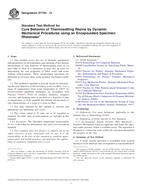
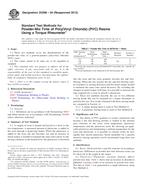 ASTM D2396-94(2012)..
ASTM D2396-94(2012)..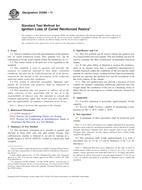 ASTM D2584-11
ASTM D2584-11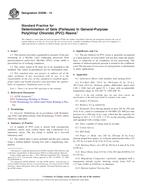 ASTM D3596-14
ASTM D3596-14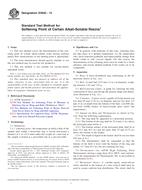 ASTM D3642-13
ASTM D3642-13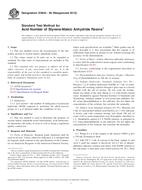 ASTM D3644-06(2012)..
ASTM D3644-06(2012)..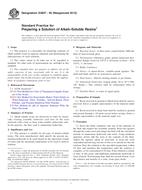 ASTM D3837-95(2012)..
ASTM D3837-95(2012)..
 Cookies
Cookies
